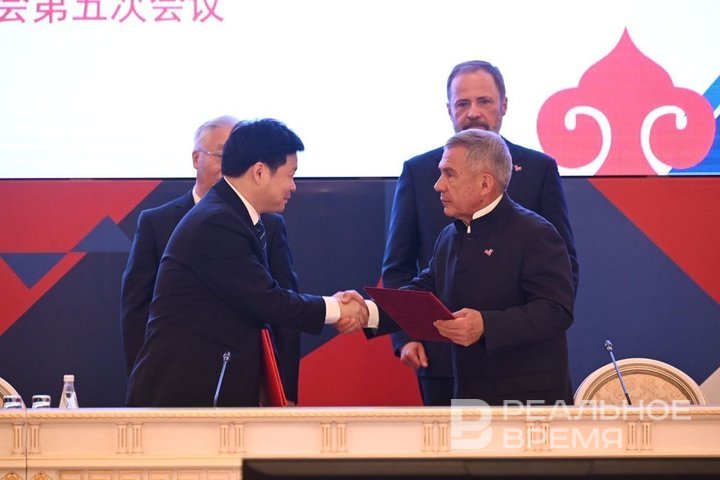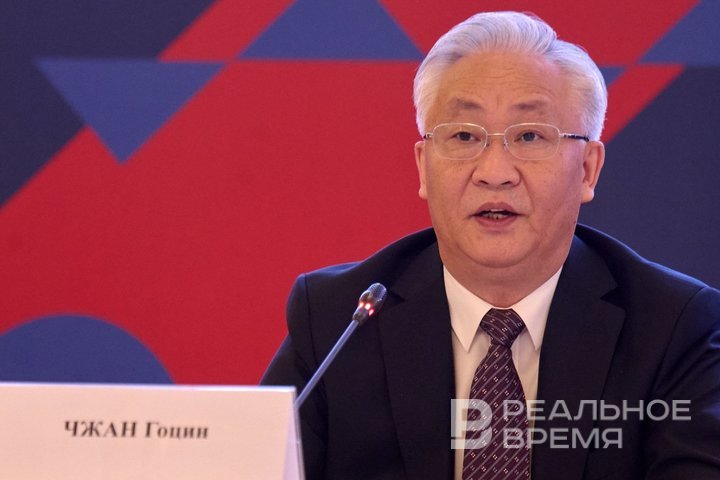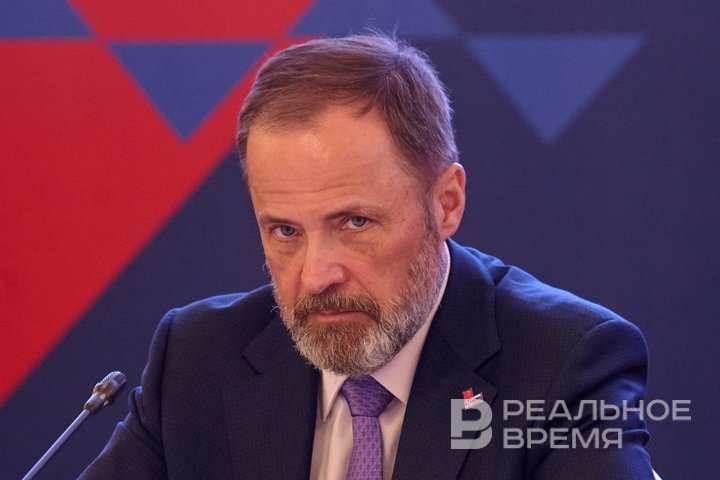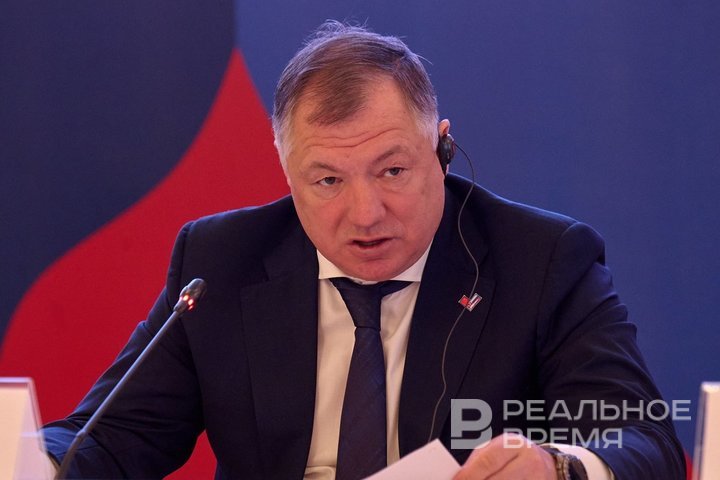Forland in Nizhny Novgorod, Dongfeng in Ulyanovsk: whom Tatarstan will invite from Chongqing
Tatarstan is seeking access to China's global market: it is possible that, together with partners from Chongqing, the production of plastic components will be established

Economic cooperation between the regions of the Volga Federal District and the provinces located along the Yangtze River plays a key role in the bilateral relations between Russia and China. According to the results of 2024, trade turnover between the Volga Federal District and the PRC increased by 6.9%, and for most regions, China is the main trading partner, said the Presidential Plenipotentiary Representative in the Volga Federal District, Igor Komarov, at the opening of the 5th meeting of the Council for Interregional Cooperation in the Volga-Yangtze format in Kazan. Despite the distance from the Far Eastern border, Chinese business has already taken root in the Volga region. Forland has set up the assembly of commercial vehicles in Nizhny Novgorod, Dongfeng Motor is working on truck assembly in the Ulyanovsk region. Tatarstan has decided to establish contacts with the diversified province of Chongqing, but what exactly it found interesting there has not been disclosed. Read more in the report by Realnoe Vremya.
To Kazan — after the Moscow parade on May 9
Kazan is hosting for the first time the Vice Premier of the State Council of the PRC, Zhang Guoqing, under whose chairmanship the “communist delegation” from China arrived for the meeting of the Council for Interregional Cooperation in the Volga-Yangtze format. The 59-year-old member of the Politburo of the Central Committee of the Communist Party of China is the third-ranking Vice Premier of the State Council of the PRC and is considered a political heavyweight, whose career rise began precisely with party work in the province of Chongqing.

Zhang Guoqing arrived in Kazan at the invitation of the Presidential Plenipotentiary Representative, Igor Komarov. The size of his delegation turned out not to be the largest: the guests fit into six white minibuses, which have been actively moving around the city. Early in the morning, the central Pushkin Street was briefly closed off by traffic police posts while the motorcade made its way to the Kazan City Hall.
The meeting turned out to be a landmark event for both sides. It was convened immediately after Chinese leader Xi Jinping took part in the Victory Day celebrations in Moscow, having previously held talks with Russian President Vladimir Putin. “The year 2025 is marked by commemorative events that bring our countries even closer together and define their role in the world,” noted Igor Komarov in his welcoming speech.
According to him, our countries are united by a shared perspective on the achievement of Victory, and now Russia and China are looking for new ways to move forward into the future. Interregional cooperation in the Volga-Yangtze format is precisely one of the tools for establishing direct contacts, the presidential envoy is convinced. By the way, this format has existed for 12 years, and the last meeting took place in November 2024 in China.
From Nizhny Novgorod to Ulyanovsk: where China’s automotive industry is heading
What have the regions managed to achieve? It turns out that the contractual framework includes 54 framework agreements in the trade and economic, scientific and technical, and humanitarian spheres. Roughly speaking, almost everyone holds five to six agreements in hand. “Foreign trade indicators point to mutual interest and the positive development of our countries' partnership. According to the results of 2024, trade turnover between the regions of the Volga Federal District and the PRC increased by 6.9% compared to the previous year. For the Volga Federal District, China’s share in foreign trade amounted to 23%. At the same time, for the majority of the district’s regions, China is the main trading partner,” said Igor Komarov.
Despite the considerable distance from the Far Eastern border, Chinese business has already taken root in the Volga region. According to Komarov, a year ago the Chinese company Forland launched the assembly of commercial vehicles in Nizhny Novgorod. In the Ulyanovsk region, a project is being developed with a company from Hubei Province to establish production of components for CNC machines, as well as to work out the conditions for launching truck manufacturing by Dongfeng Motor. In the Saratov region, Chinese investors are planning to plant orchards and build a fruit and vegetable storage facility with packaging. The company Rustekhnologii Izhevsk, owned by Chinese entrepreneurs, will open a rolled steel processing plant in Udmurtia in 2025. The total amount of investment was not disclosed, but it is clear that Chinese business is entering the Volga region with increasing determination.

Russia and China could expand cooperation within the framework of the national project “Infrastructure for Life," said Russian Deputy Prime Minister Marat Khusnullin.
Some time ago, he returned from China and subsequently put forward proposals on areas of cooperation. Firstly, in the field of urban development and housing construction. Secondly, in the area of intelligent road management. “There are many government programmes in Russia and China aimed at improving quality of life, which need to be shared,” he believes.

Zhang Guoqing did not hide his satisfaction with the progress of Chinese automotive brands. According to him, Chery, JAC, and Dongfeng, originating from regions located along the banks of the Yangtze River, are confidently securing their positions in the Russian Federation. Additionally, China is interested in the supply of wheat and rapeseed oil.
Left flank approach: will the supplier bet pay off?
Chinese investments in Tatarstan have so far stalled. As reported by the head of Tatarstan, Rustam Minnikhanov, foreign trade turnover between Tatarstan and China grew by 9% in 2024 — reaching $3.3 billion. However, the investment dynamics remain unimpressive — an increase of only $39 million. The largest investor remains the company Haier, which has built six factories in Naberezhnye Chelny. The head of the republic urged more active use of the region’s industrial potential, noting that the region produces 24% of Russia’s total polyethylene, 41% of synthetic rubber, 62% of car tyres, and 30% of trucks. Apparently, the republic’s leadership aims to attract China to expand the processing of the raw material base.
“Active support for small and medium-sized businesses, developed infrastructure, and a strategic location at the crossroads of trade routes make the region attractive for investment. We have significant opportunities for cooperation with China that need to be more fully utilised,” said Rustam Minnikhanov. It should be added that in Zelenodolsk, with the participation of Chinese partners, a plant for the production of elevators is being built, while KAMAZ is cooperating with JAC Motors in the assembly and sale of light trucks.

Following this, Tatarstan and China’s largest industrial province, Chongqing, agreed to develop cooperation in various areas of activity for the years 2025–2027. The corresponding plan of action between the government of Tatarstan and the Municipal People’s Government of Chongqing was signed that day by the head of the republic, Rustam Minnikhanov, and Chongqing’s Vice Mayor, Mr Chen Xinwu. Chongqing, alongside Beijing, Shanghai, and Tianjin, is one of China’s four centrally administered municipalities. The city hosts 10,000 industrial enterprises, with fixed assets valued at $9.2 billion. Chongqing’s industries include chemical, engineering, electronics, and metallurgy, as well as the production of electric vehicles, batteries, integrated circuits, biopharmaceuticals, medical equipment, and aerospace missile technology.
Last year, the Tatarstan delegation visited China three times, touring the provinces of Jilin, Sichuan, and Chongqing. In the end, it was decided to sign an agreement with the latter, while the partners of the other two provinces will be the Samara region and Chuvashia. Interestingly, nothing was mentioned about the prospects of transportation from the Alabuga Special Economic Zone, which is constructing the Deng Xiaoping Logistics Centre.